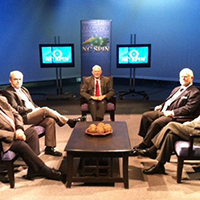Test results raise a lot of questions - as they should
Published November 8, 2013
by Bob Leubke, Civitas Institute, November 7, 2013.
Don’t panic. That’s the message most of us have been hearing all day from the Department of Public Instruction (DPI). Today DPI released state test scores for the READY Accountability model. The scores include results for end-of-grade (EOG) and end-of-course (EOC) tests that are aligned to the Common Core State Standards in English Language Arts, Mathematics and Essential Standards in Science. DPI has been tamping down expectations for two months. So the expectation was when compared to last year, scores would drop significantly.
They were right. Some of the major results:
- Compared to last year, the number of students gaining proficiency in math and reading in grades 3 through 8 fell from 58.9 percent of students to 32.0 of students having proficiency in both subjects.
- 25.5 percent of schools met all school progress state target goals.
- 35 percent of schools met all school progress federal target goals.
I’m writing this before the DPI press conference which is scheduled for 4 pm this afternoon. I wonder why does an organization schedule a press conference for 4 pm in the afternoon unless they are trying to skirt the evening news cycle? I’m not buying they were waiting until the State Board of Education adjourned to start the meeting.
I expect the results will be spun and sliced a million ways. And parents will be exhorted to “stay the course.” They will also be told, “the implementation of the higher, more rigorous common core standards is the main reason for the low test scores.”
I beg to differ. The low scores are a result of a lot of things: bad planning, testing on standards that had never been tested, lack of preparation for teachers and probably lots of other things too specific or complicated to generalize to a population of nearly 1.5 million students.
Did higher standards cause the lower scores? That’s what DPI wants you to think. The explanation begs a few questions: What evidence exists to show Common Core Standards are more rigorous? What examination and testing was conducted? If Common Core Standards are more rigorous and better, why was DPI satisfied for years with academic standards that they now say were clearly inferior to what we now have?
“Today’s results mark the beginning of a new cycle of accountability for North Carolina. The State Board of Education has set a higher standard for academic rigor to help our students be prepared for a 21st century competitive world.” No, that wasn’t a quote from June Atkinson at today’s State Board of Education meeting. It was from November 8, 2006, nearly seven years ago to the day.
Back then we were being told this is a new era with high standards. No Child Left Behind was supposed to ensure all our students were proficient and performing at grade level. Did it work? Last year North Carolina and nearly every other state in the nation received a waiver exempting the state from penalties incurred from failing to meet the goals outlined in the program.
Now North Carolina parents are being asked not to panic and stay calm — again. The new Common Core Standards are supposed to usher in a new era of accountability. Truth be told, academic experts from around the country have criticized Common Core Standards for lacking rigor. In addition, college readiness has been shown to be nothing more than meeting admission requirements of nonselective colleges. If DPI wants parents to stay calm, it needs to offer a credible response to these criticisms.
Don’t panic, stay calm? Parents might be more willing to take the advice if they felt school leaders were listening to them.
For specific information on test results and the NC Accountability Model, click here.
November 8, 2013 at 12:00 pm
Vanessa Jeter says:
NCDPI held its news conference on Nov. 7 immediately following the State Board of Education's monthly meeting. All of our advance media announcements referenced 12:45 p.m. or immediately following the Board's adjournment. I'm not sure where you got the 4 p.m. news conference time. That was never a time that we considered. Typically, we hold these press events immediately following the formal presentation at the Board's meeting which generally ends around mid-day.







